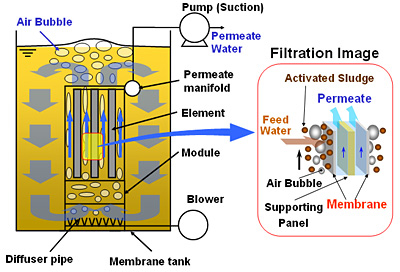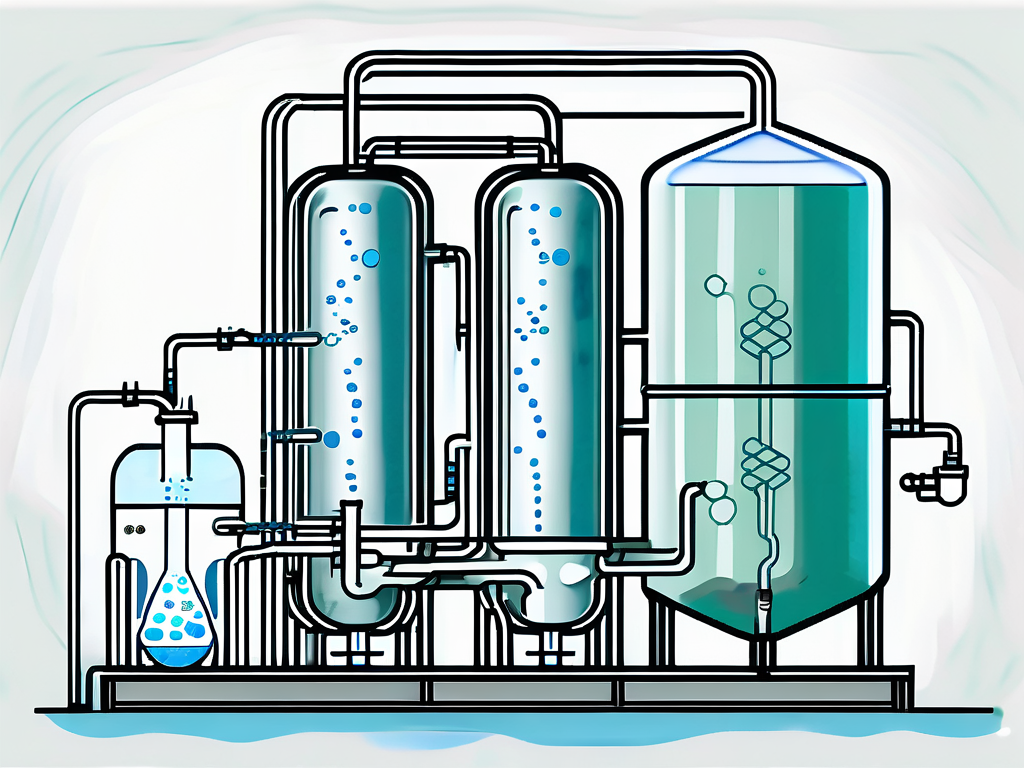The Advantages of Using a Membrane Bioreactor for Efficient Water Purification
The Advantages of Using a Membrane Bioreactor for Efficient Water Purification
Blog Article
Membrane Layer Bioreactors Discussed: Effective Solutions for Clean Water
Membrane bioreactors (MBRs) have actually emerged as a sophisticated option for attending to the pushing obstacles of wastewater treatment - Membrane Bioreactor. By integrating organic procedures with advanced membrane layer filtering, MBRs not only improve the high quality of cured water yet likewise lower the spatial needs of therapy centers.

What Are Membrane Layer Bioreactors?
Membrane layer bioreactors (MBRs) are advanced wastewater therapy systems that integrate organic degradation procedures with membrane filtering technology. This integration permits the effective removal of contaminants from water, making MBRs a preferred choice in different applications, including community wastewater therapy and commercial effluent administration.

Among the vital advantages of MBRs is their capability to produce top quality effluent, typically suitable for reuse in watering or industrial processes. Additionally, MBRs need a smaller sized impact contrasted to conventional therapy systems, making them perfect for urban setups where area may be limited.
Additionally, MBRs can successfully take care of varying influent tons and are much less prone to the impacts of toxic shocks. These features contribute to their expanding appeal as a sustainable solution for resolving the increasing demand for tidy water while lessening ecological effects.
Just How Membrane Layer Bioreactors Work
While the operation of membrane layer bioreactors (MBRs) may seem complex, it fundamentally focuses on the harmony in between biological procedures and membrane layer filtering. MBRs integrate a biological treatment procedure, commonly triggered sludge, with a membrane separation device to treat wastewater efficiently.
In an MBR system, wastewater is first introduced right into a bioreactor where microbes degrade raw material and various other pollutants. The biological activity minimizes the focus of pollutants while promoting the development of biomass. Following this organic therapy, the mixed liquor goes through membrane layer filtration, which can be microfiltration or ultrafiltration, relying on the wanted effluent high quality.
The membrane layers act as a physical barrier, permitting water and little solutes to pass while maintaining suspended solids and larger particles. This makes it possible for the system to preserve a high focus of biomass within the activator, enhancing the therapy performance.
Furthermore, the continuous separation of cured water from the biomass promotes a small design and lessens the footprint of the therapy center. On the whole, the mix of biological degradation and membrane layer filtering in MBRs leads to reputable and reliable wastewater treatment, making certain premium effluent ideal for various applications.
Advantages of MBR Technology
Among the crucial benefits of membrane bioreactor (MBR) innovation is its capability to produce high-grade effluent with a significantly reduced footprint contrasted to traditional wastewater therapy techniques. MBR systems efficiently integrate organic therapy and membrane purification, resulting in superior elimination of pollutants, consisting of suspended solids, pathogens, and organic issue. This ability causes effluent that usually meets or exceeds strict governing requirements for reuse and discharge.
In addition, MBR modern technology allows for higher biomass concentrations, which boosts the therapy performance and reduces the called for activator quantity. This small layout is especially advantageous in city locations where room is limited. The functional adaptability of MBR systems additionally means they can adapt to varying influent qualities and circulation prices, making them suitable for a variety of applications.
Furthermore, the minimized sludge manufacturing related to MBR processes adds to decrease operational and upkeep costs. The top article membrane layers act as a physical obstacle, minimizing the danger of blocking and making it possible for longer operational periods in between cleaning. In general, the benefits of MBR technology make it an appealing solution for lasting wastewater treatment, resolving both environmental problems and the demand for effective source monitoring.
Applications of Membrane Bioreactors
With their convenience and performance, membrane bioreactors (MBRs) locate applications throughout numerous markets, consisting of community wastewater therapy, industrial processes, and even water improvement. In community settings, MBRs supply a portable service for dealing with wastewater, properly removing impurities while all at once generating high-quality effluent that fulfills stringent regulative criteria. This makes them particularly appropriate for locations with minimal space.
In industrial applications, MBR technology is made use of for treating procedure water, particularly in industries such as food and beverage, pharmaceuticals, and petrochemicals. These sectors benefit from MBRs' capacity to manage high organic lots and look at these guys their performance in recovering valuable sources from wastewater, such as nutrients and water.
Additionally, MBRs play an important function in water improvement efforts, allowing the reuse of treated wastewater for irrigation, industrial processes, or even as drinkable water after additional treatment (Membrane Bioreactor). Their effectiveness in eliminating toxins and pathogens makes them a trustworthy selection for guaranteeing water quality in different reuse applications
Future of Water Treatment Solutions
The future of water therapy services is positioned for transformative developments driven by technological innovation and increasing environmental awareness. As global water deficiency becomes a pressing concern, brand-new methods, consisting of membrane bioreactor (MBR) systems, are readied to play a click now crucial duty in enhancing the performance and sustainability of water therapy procedures.
Arising modern technologies such as expert system and machine discovering are anticipated to enhance therapy operations, permitting for real-time tracking and predictive maintenance. This will boost the total integrity and efficiency of water therapy facilities. Innovations in membrane layer products, such as graphene and nanofiltration, assure to increase permeation rates and lower fouling, leading to reduced energy usage and functional costs.
Additionally, the combination of renewable energy sources into water therapy plants will certainly add to greener methods. The circular economy design will certainly likewise acquire traction, urging the healing of valuable sources from wastewater, such as nutrients and energy.
Verdict

Membrane bioreactors (MBRs) have actually arised as an innovative solution for resolving the pushing difficulties of wastewater therapy. By integrating organic procedures with sophisticated membrane filtration, MBRs not just enhance the quality of cured water however likewise decrease the spatial demands of treatment centers.One of the key advantages of membrane layer bioreactor (MBR) technology is its ability to create top quality effluent with a significantly minimized impact compared to standard wastewater treatment methods.With their flexibility and effectiveness, membrane bioreactors (MBRs) find applications throughout various fields, including metropolitan wastewater therapy, industrial processes, and also water reclamation.In verdict, membrane bioreactors stand for a considerable innovation in wastewater therapy innovation, integrating biological procedures with efficient membrane layer purification to generate high-quality effluent.
Report this page